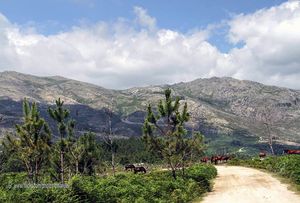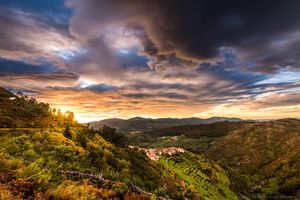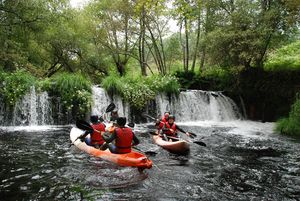
Peneda-Gerês National Park, Portugal
Enjoy nature on its purest form in the Peneda Gerês National Park in the North of Portugal.
The Peneda-Gerês National Park, the only national park in Portugal, counts with 703 square kilometres of land and extends to Northern end of the country. It occupies a great part of the districts of Viana do Castelo, Braga and Vila Realand it shares more than 100 kilometres of frontier with the Southwestern province of Ourense, covering four impressive granite massifs and offering tops splashed with rocks from where you will have a look at nature in its purest form, deep valleys, lush cork oaks and pine wood.
Serra da Peneda and Serra do Gerês feature more than a hundred remote stone villages that have endured the passing of time. Most of them are still intact and retain the atmosphere they had when the country of Portugal was established in the 12th century, being a true treasure of the park.
This privileged place allows the preservation of a unique compound of ecosystems, notable archeological sites (Stone Age dolmens, tapirs, menhirs) and an endangered way of life threatened by its human inhabitants. Its numerous citizens live distributed among the villages and hamlets where traditions are preserved. An agro-pastoral economy coexists in perfect harmony with the environment.
The few roads that plough through the national park, flow well into the magnificent natural landscapes. However, to discover its true wealth is recommendable to go all over it on foot.
La Serra do Gerês Mountains counts with a more steep and virgin land, which gets the majority of tourism thanks to its excellent conditions for hiking and for practicing sports such as kayak or rafting.
Regarding the fauna and the flora, in the more remote areas it is easy to find Iberian wolves, wild boars, badgers and otter and, if you are lucky, it is also possible to see some roe deer (the park’s symbol) or savage ponies. For bird lovers, you will enjoy having a look at red kites, the common buzzard, goshawks, golden eagle and various types of owls.
Domestic animals also are a great attraction of the park as it is very common to find primitive bovine breeds of long-horned beetle, such as the barrosã, of auburn colour; ola cachena; goats, sheeps or the shepherd dog Castro Laboreiro.
In the most protected valleys there are numerous examples of white and black oaks, arbutus, laurels and cork oaks; while in the high areas it is more common to find birch trees, podocarpus, scots pines, junipers and arenarias. It should be emphasized the Gerês iris, an endemic specie which grows up in a little territory of the Serra do Gerês Mountains.
This place offers numerous adrenaline-rush activities. All around the park there are many well signed hiking trails with lengths that go between 1 and 17 kilometres. Furthermore, it is also possible to rent a mountain bike. On Rio Caldo it is possible to practice water sports; and in Vila do Gerês there are baths which are ideal for some rest.
Mapa Interactivo:
Peneda Gerês National Park
What to see:
- Serra da Peneda
- Castro Laboreiro Castle
- Soajo
- Vila do Gerês
- Rio Caldo and Albufeira de Caniçada Lagoon
- São Bento da Porta Aberta Sanctuary
- Campo do Gerês
- Vilarinho das Furnas Ethnographic Museum
- Cabril
- Pitões das Júnias
- Santa Maria das Júnias Monastery
- Lindoso Castle
- Nossa Senhora da Abadia Sanctuary
- Cascatas do Tahiti Waterfalls
Other worth-visiting nearby towns and cities:
Why "Portugal Travel"?
Portugal Travel is an organization of Portuguese agencies whose objectives are:
- ✓ To make Portugal, its culture and its heritage known.
- ✓ To promote sustainable tourism.
In collaboration with:
Escola Superior de Hotelaria e Turismo do Estoril
Turismo de Portugal
Copyright PortugalTravel.org © - All rights reserved.







